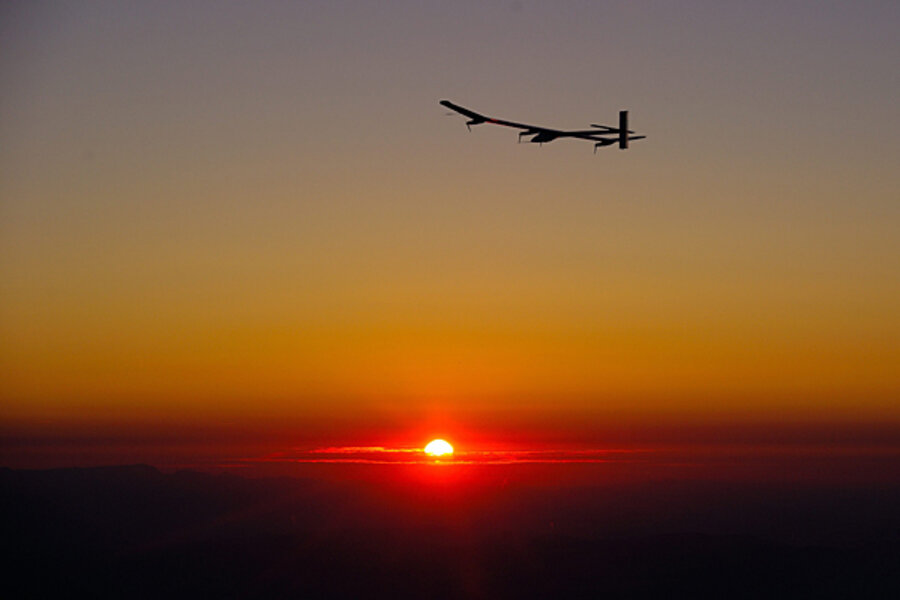Solar-powered plane to circumnavigate globe. How will it fly at night?
Loading...
Has Greek mythology taught us nothing?
The man who flew around the world in a hot air balloon now wants to make the same trip using only the power of the sun.
Bertrand Piccard – not Icarus – plans to make the trip in his Solar Impulse, a fragile-looking plane that weighs less than an SUV and is powered by the 12,000 solar cells that make up its overlong wings.
While it's not the first sun-powered plane, the Solar Impulse is unlike others in that its energy-efficient batteries allow the plane to soar even through dark night skies.
"These cells capture the energy of the sun and transform it into electricity," Mr. Piccard explained in an interview with 60 Minutes. "This electricity goes simultaneously to the engine and to the batteries. Then we reach the next sunrise, and we capture the sun again, and we can continue, theoretically forever."
The psychologist and aeronaut came up with the idea 13 years ago after becoming the first to circumnavigate the globe nonstop in a balloon. Dismayed by the trip's enormous fuel dependency, Piccard promised his next flight would be self-sustaining.
In 2009, Piccard, along with his business partner André Borschberg, unveiled a solar-powered plane that relied only on the limitless power of the sun.
A year later the two showed the technology was capable of overnight flight when Mr. Borschberg flew the experimental craft for 26 hours and 9 minutes over Switzerland.
The former Swiss Air Force fighter pilot described the renewed appreciation of sunlight that comes with depending on it to remain aloft, 20,000 plus feet in the air:
"The sunset is gorgeous, but the sunrise of course brings the next day," he told 60 Minutes. "It brings the hope again that you can continue."
Videos posted on the Solar Impulse website capture the odd craft slowly taking off and floating through the air. It's ideal flying speed is 30 miles per hour. What it lacks in brute, energetic force, it seems to make up for in quiet grace. "Flying" doesn't quite capture the plane's motion, as it appears almost suspended in midair.
Of course, there are some kinks left to work out before the Solar Impulse is even remotely close to market-ready. The craft's extremely light weight makes it particularly susceptible to storms. The cockpit lacks climate control and the plane stalls at low speeds, 60 Minutes reports.
At least the wings aren't held together with wax.
Borschberg and Piccard hope to complete the first purely solar-powered flight across the US next spring. The entrepreneurs' plan is for the Impulse to take a 20-day trip around the globe in 2015.







